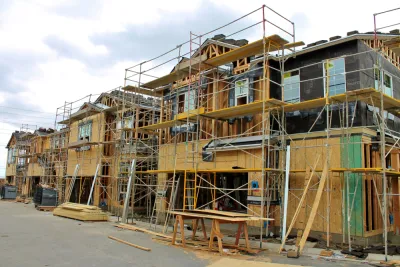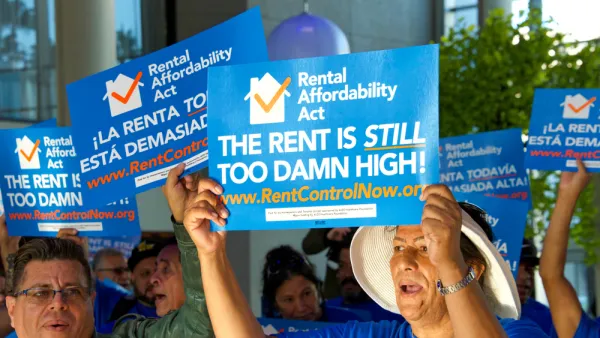California's Senate Bill 35 is touted by affordable housing advocates and other pro-development forces as an example of what good developments can happen when local obstructions are moved out of the way by the state.

More than 40 projects around California have used SB 35 since the law went into effect in January 2018, according to an article by Marisa Kendall. "The law requires most cities to fast-track residential and mixed-use projects that meet certain affordability and other standards."
Kendall is sharing the findings of analysis by The Mercury News, which concludes: "California city officials have approved or are still considering more than 6,000 homes proposed under the law — including about 4,500 in the Bay Area..."
The projects identified by The Mercury News include mostly subsidized units for low-income renters, but large mixed-income and mixed-use projects are missing from the list of projects enabled by the law.
"SB 35’s strict rules — requiring as much as half of a project be subsidized, low-income housing, and mandating a builder pay workers the local prevailing wage, for instance — aren’t worth the added expense for many market-rate developers said Oakland-based land-use attorney Todd Williams."
As noted by Kendall, a new law approved and signed in October, AB 1485, would expand the purview of SB 35 to include more middle-income projects.
FULL STORY: Is California’s most controversial new housing production law working?

National Parks Layoffs Will Cause Communities to Lose Billions
Thousands of essential park workers were laid off this week, just before the busy spring break season.

Retro-silient?: America’s First “Eco-burb,” The Woodlands Turns 50
A master-planned community north of Houston offers lessons on green infrastructure and resilient design, but falls short of its founder’s lofty affordability and walkability goals.

Delivering for America Plan Will Downgrade Mail Service in at Least 49.5 Percent of Zip Codes
Republican and Democrat lawmakers criticize the plan for its disproportionate negative impact on rural communities.

Test News Post 1
This is a summary

Test News Headline 46
Test for the image on the front page.

Balancing Bombs and Butterflies: How the National Guard Protects a Rare Species
The National Guard at Fort Indiantown Gap uses GIS technology and land management strategies to balance military training with conservation efforts, ensuring the survival of the rare eastern regal fritillary butterfly.
Urban Design for Planners 1: Software Tools
This six-course series explores essential urban design concepts using open source software and equips planners with the tools they need to participate fully in the urban design process.
Planning for Universal Design
Learn the tools for implementing Universal Design in planning regulations.
EMC Planning Group, Inc.
Planetizen
Planetizen
Mpact (formerly Rail~Volution)
Great Falls Development Authority, Inc.
HUDs Office of Policy Development and Research
NYU Wagner Graduate School of Public Service





























